Sometimes all you want is a glass that feels like sunshine in your hands. That’s exactly what this pineapple pink smoothie delivers. The blend of sweet pineapple, fresh strawberries, and a little creamy base makes every sip feel refreshing and light. I’ve always loved starting my day with smoothies because they wake me up better than coffee. And yes, I said it. Don’t judge until you’ve tried it. This recipe is one of those fruit smoothie recipes that ticks every box. It’s quick, it’s simple, and it comes together in a matter of minutes. Unlike some complicated smoothie recipes that call for rare powders, this one relies on classic fruits you can grab at almost any grocery store. A little prep, a push of a blender button, and you’ve got a creamy drink that looks like it belongs on a beach menu. Call it a recipe smoothie, call it your morning pick-me-up, or just call it delicious. I often think of it as one of my favorite pineapple smoothie recipes because the pineapple gives it that natural sweetness without extra sugar. If you’re a fan of green smoothie recipes, you can toss in a handful of spinach too and it still tastes amazing. I tried that once when I was low on strawberries, and honestly, it became my go-to green smoothie recipe variation. Either way, this is one of those easy fruit smoothie recipes you’ll want to keep on repeat.
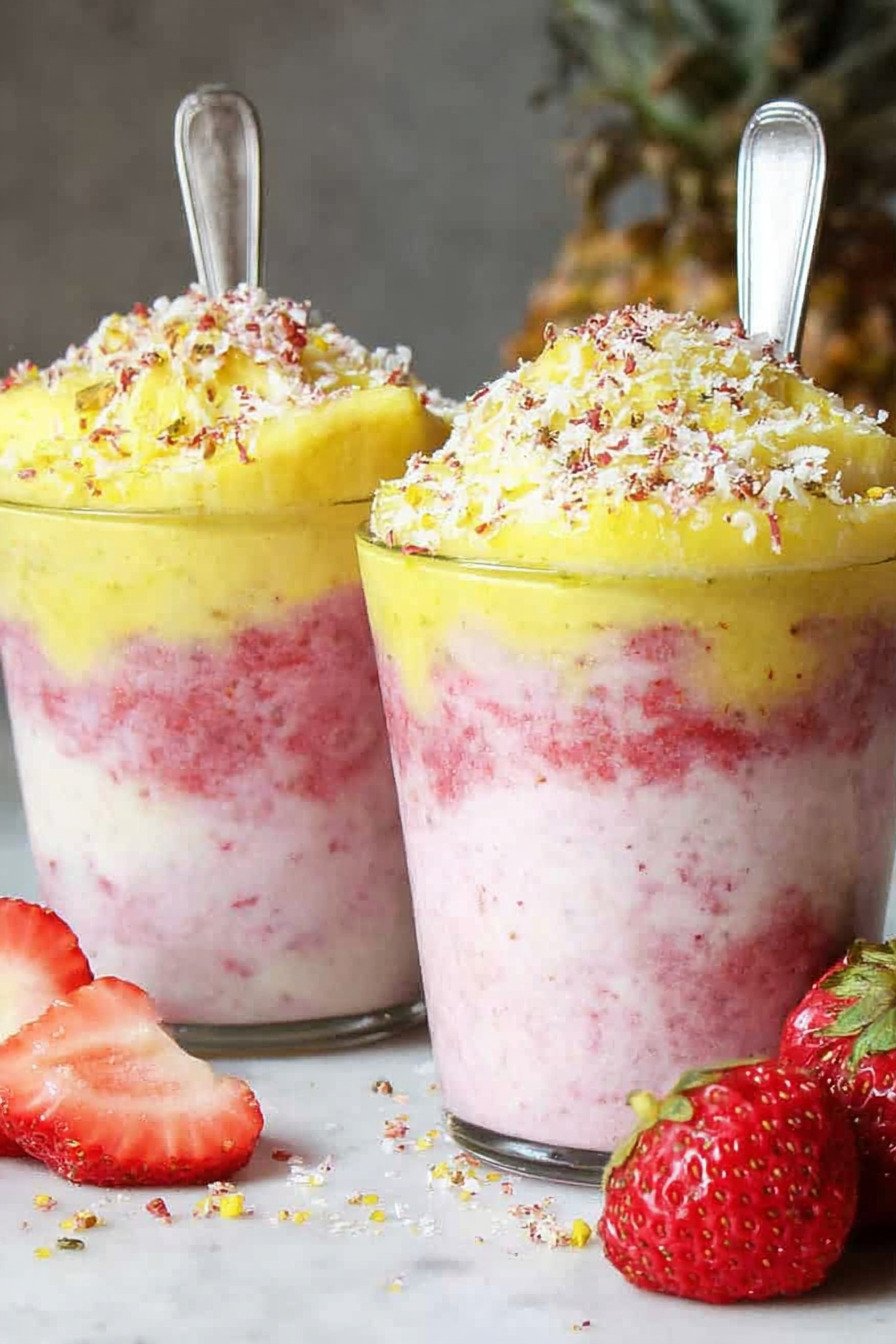
Table of Contents
- 1) Key Takeaways
- 2) Easy Anti-Inflammation Pineapple Pink Smoothie Recipe
- 3) Ingredients for Anti-Inflammation Pineapple Pink Smoothie
- 4) How to Make Anti-Inflammation Pineapple Pink Smoothie
- 5) Tips for Making Anti-Inflammation Pineapple Pink Smoothie
- 6) Making Anti-Inflammation Pineapple Pink Smoothie Ahead of Time
- 7) Storing Leftover Anti-Inflammation Pineapple Pink Smoothie
- 8) Try these smoothies next!
- 9) Anti-Inflammation Pineapple Pink Smoothie
- 10) Nutrition
1) Key Takeaways
- This smoothie blends pineapple, strawberries, banana, and almond milk into a refreshing glass.
- You can adjust consistency with more or less liquid depending on how thick you like it.
- Add chia seeds or ginger if you want an extra boost.
- This recipe shows how fruit smoothie recipes can be simple, fast, and flavorful.
2) Easy Anti-Inflammation Pineapple Pink Smoothie Recipe
Fruit smoothie recipes like this one bring a little brightness to any morning. The pineapple gives a sweet base, the strawberries add color, and the banana makes it creamy. Sometimes I blend it up after a workout when I want something that feels both refreshing and filling. Two minutes, and the blender does the work.
I call it easy because there is no long prep. I keep frozen pineapple and strawberries on hand, which means I can throw this together without a grocery run. If the fruit is fresh, that works too. The flavor stays the same. I like that it feels almost too simple to count as a recipe, yet it always tastes balanced.
On my website, Elena Cooks, I share recipes that are practical. This one fits right in. I tested it many times, sometimes with extra ginger, sometimes without. Each version worked, which tells me you can be relaxed with it. Smoothie recipes should not stress anyone out.
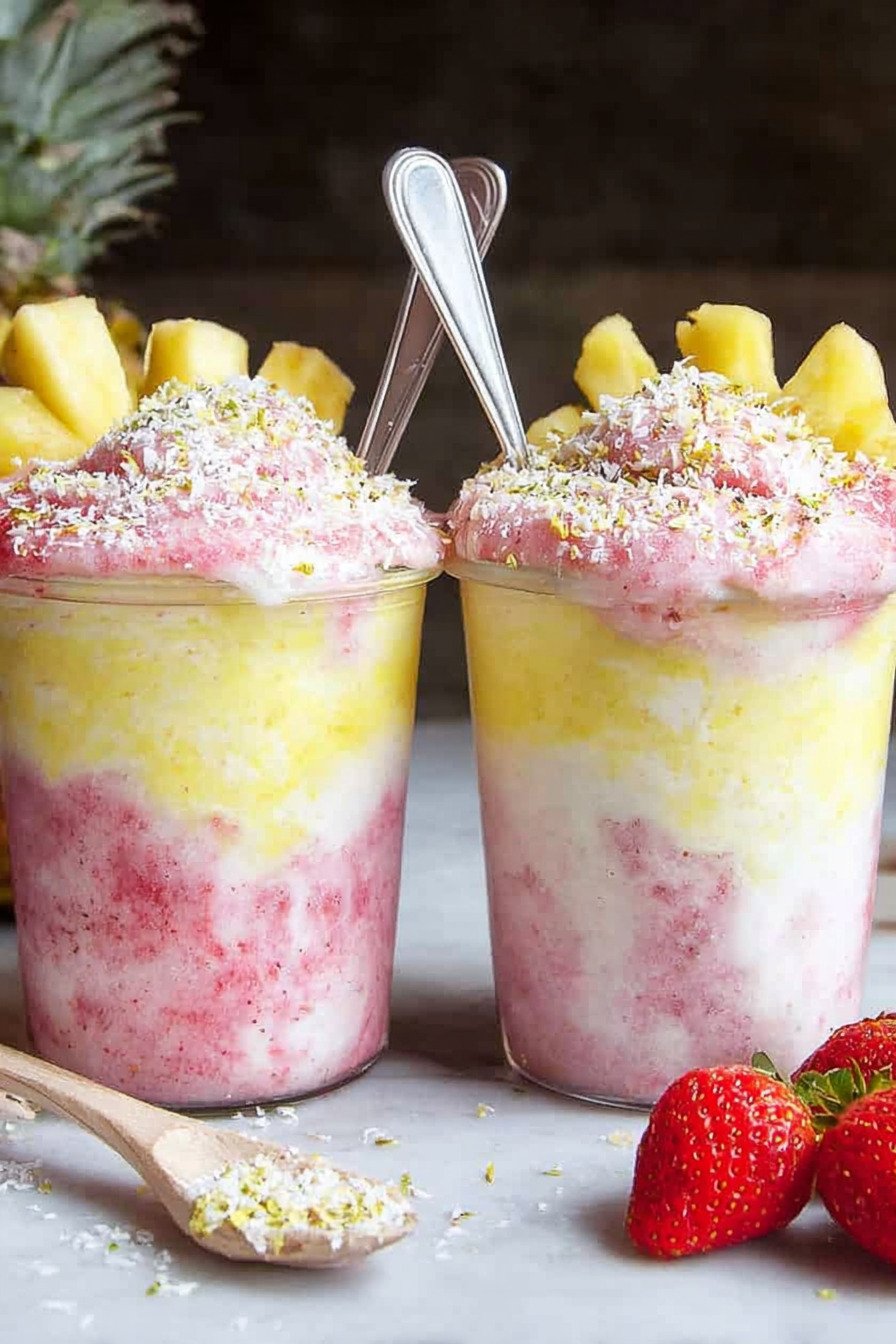
3) Ingredients for Anti-Inflammation Pineapple Pink Smoothie
Pineapple: Frozen pineapple chunks add sweetness and a tropical edge. They also make the smoothie thick without ice. Fresh pineapple works too, though I prefer frozen for convenience.
Strawberries: Frozen or fresh strawberries bring color and tang. When strawberries are at their best in season, I like to use them fresh. Frozen berries give a colder, frothier drink.
Banana: A ripe banana adds natural creaminess and rounds out the flavor. If it is frozen, the smoothie comes out thick enough to eat with a spoon. Fresh banana gives a lighter drink.
Almond Milk: Unsweetened almond milk is my base. It keeps the flavor clean and light. You can use oat milk, coconut water, or even dairy milk if that’s what you keep in the fridge.
Chia Seeds: Optional but useful if you want more fiber and thickness. They don’t change the taste much but they do add body to the drink.
Fresh Ginger: A teaspoon of grated ginger brings a warm edge and pairs well with pineapple. I sometimes skip it when I want only fruit flavors, but I like it on colder mornings.
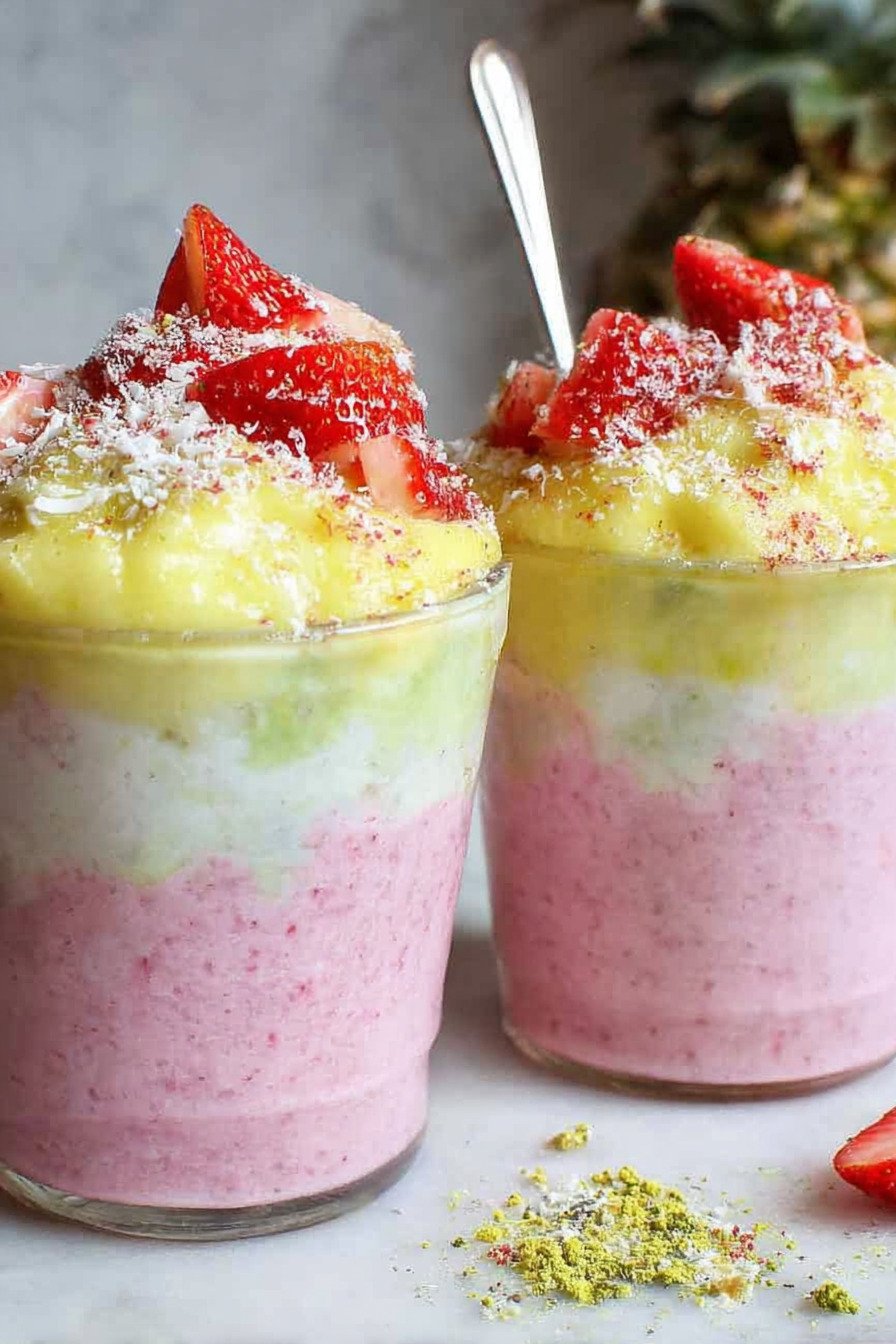
4) How to Make Anti-Inflammation Pineapple Pink Smoothie
Step 1. Place the pineapple, strawberries, banana, almond milk, and any extras like chia or ginger into a blender. Use a strong blender for best texture.
Step 2. Blend on high until the mixture looks smooth and creamy. Check the sides of the blender and scrape them down if needed. You want no chunks of fruit left.
Step 3. Taste the smoothie. If it feels too thick, pour in a splash more milk. If you want more sweetness, add a little more pineapple or banana. Blend again until you are happy with it.
Step 4. Pour into glasses right away. Smoothies taste best fresh, when the fruit is bright and the texture is at its peak. I usually drink mine with a straw and feel like I am on vacation for a few minutes.

5) Tips for Making Anti-Inflammation Pineapple Pink Smoothie
I learned that the texture changes based on fruit temperature. Frozen fruit makes it thicker, fresh fruit makes it lighter. You can play with the mix. I sometimes use half fresh and half frozen to hit the balance I like.
If you enjoy smoothies cold, drop in a few ice cubes. They make the drink frothy and keep it colder longer. If you dislike watered-down flavor, stick with frozen fruit. It gives the chill without the melt.
Fruit smoothie recipes often use extra sweeteners. I never feel the need here. The fruit carries enough natural sugar. If you want it sweeter, add a drizzle of honey. Taste first, then decide. That way, you keep control over how sweet it becomes.
6) Making Anti-Inflammation Pineapple Pink Smoothie Ahead of Time
I like to prep smoothie packs for busy mornings. I portion pineapple, strawberries, and banana into bags and freeze them. That way, I grab a bag, dump it into the blender, add milk, and press blend. It saves time on rushed days.
The smoothie itself can sit in the fridge for a few hours if you need to make it early. I do this sometimes when I have to leave the house quickly. Stir it before drinking since it can separate a bit.
For longer storage, I recommend freezing it in ice cube trays. Later, you can blend the cubes with more milk to refresh the texture. It tastes close to the original, and it feels like a handy trick for meal prep.
7) Storing Leftover Anti-Inflammation Pineapple Pink Smoothie
When I end up with more smoothie than I planned, I pour the extra into jars with lids and store them in the fridge. They last for about a day. Before drinking, I shake the jar or stir it to bring the flavors back together.
Another way to save leftovers is to pour them into popsicle molds. My kids love this, and it turns the smoothie into a frozen snack. It’s simple and avoids waste.
If you want to keep it longer, the freezer is your friend. Pour the smoothie into containers, leave some space at the top, and freeze. Thaw in the fridge overnight or blend again with fresh milk for a smooth texture.
8) Try these smoothies next!
9) Anti-Inflammation Pineapple Pink Smoothie
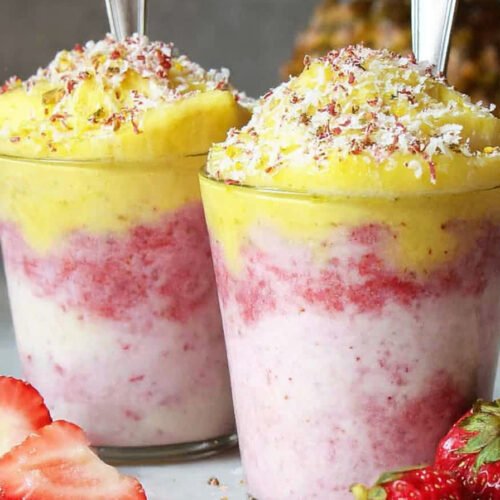
Fruit Smoothie Recipes Anti-Inflammation Pineapple Pink Smoothie
Ingredients
- 1 cup frozen pineapple chunks
- 1 cup frozen strawberries
- 1 banana (fresh or frozen)
- 1 cup unsweetened almond milk (or milk of choice)
- 1 tablespoon chia seeds (optional)
- 1 teaspoon grated fresh ginger (optional)
Instructions
- Add all the ingredients to a high-speed blender.
- Blend until smooth and creamy.
- Taste and adjust by adding more milk for thinner consistency or more fruit for thickness.
- Pour into a glass and enjoy immediately.
10) Nutrition
Serving Size: 1 glass | Calories: 190 | Sugar: 22 g | Sodium: 40 mg | Fat: 3 g | Saturated Fat: 0.3 g | Carbohydrates: 45 g | Fiber: 6 g | Protein: 3 g | Cholesterol: 0 mg


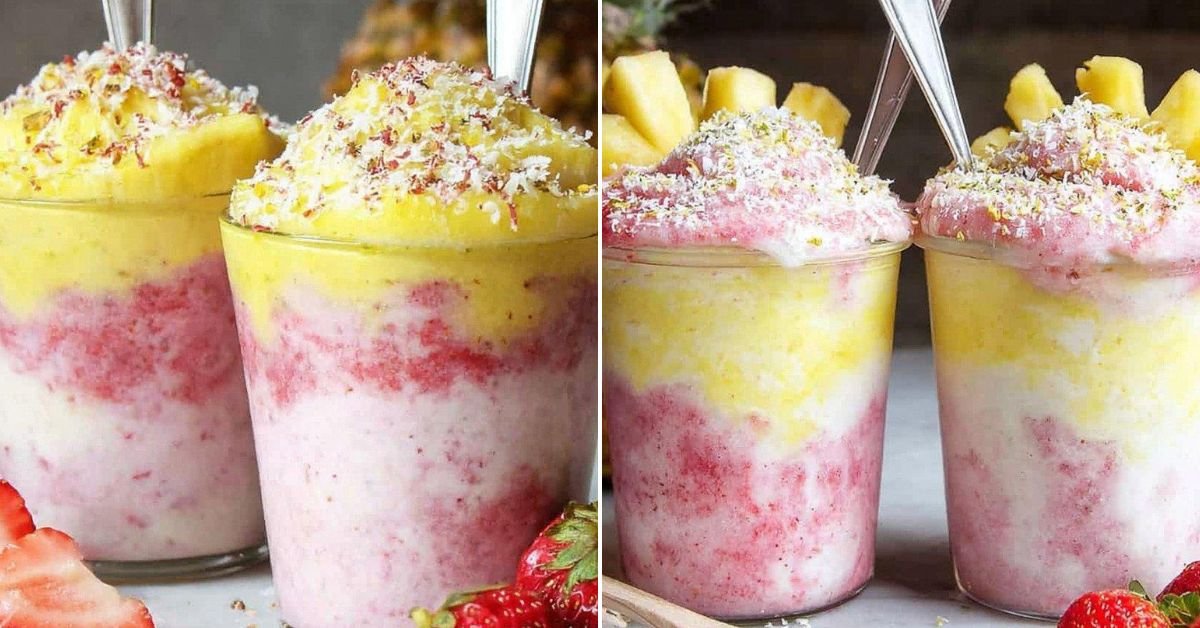








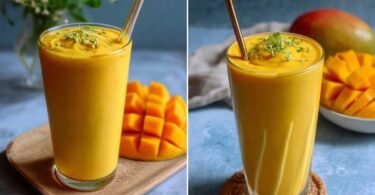
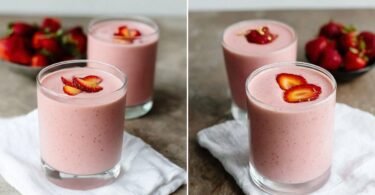
Leave a Comment